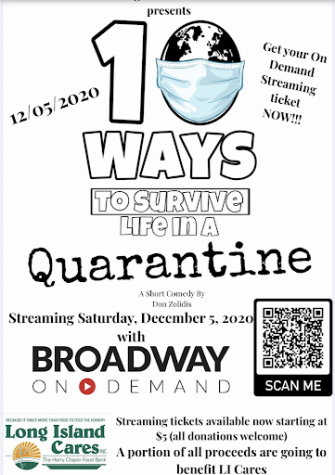The Application Process: Part One
“Get started early,” they say. “Visit as many schools as possible,” they say. “Study for the SAT and focus on your grades,” they say. “They” could be your parents, teachers, guidance counselors, or anyone who knows what must be done when it comes to applying for college. They tell you it’s a long, tedious process that must be prepared for vigorously. They are right.
Come senior year, I expected a smoother ride than eleventh grade. Last year was full of college visits along the east coast, studying as much as I could, and preparing for the SAT time and time again. I wish the hard part was over, but it has only just begun.
Along with many other students, I began drafting my college list in the late summer. Many factors came into play. That’s the problem when applying for schools; it’s not just about how much you like a school, it’s about your SAT scores, grades, the price, and distance. So much is involved, and you can’t get started early enough.
For the first quarter, I have focused on my Common Application as did many of my classmates. From my college essay to the supplemental essays for each school, it has been quite a process. Many decisions have to be made about your topics. Colleges may ask you why you are choosing to apply to their specific school, what community service you have done, or to describe any jobs you’ve held. To get to know your personality, colleges can ask random questions such as what you did last Thursday, to create a food truck, or to name a place to which you want to travel. There are no trick questions here; schools just want to see your answer, not the best one. Aside from academics, being true to your character is the most significant part of your application.
Tedious describes the application process to a T, but if you are applying to schools that require you to self report classes and grades, the work is more than tedious— it’s exasperating! Every class you took from ninth to twelfth grade must be entered along with your grades. Of course, in the end it is worth it. Whether it’s the SSAR or SRAR, both are the most time consuming aspect of applying to colleges.
Another difficult part is choosing which activities to include. The Common Application has ten spots, and the Coalition only has eight to mention which activities you have participated in throughout your high school career. Regarding activities for both applications, you must be precise with your wording so the admissions officers understand what you’ve participated in. Then, you have to order them from most to least important, making for more decisions to be made. Students on the brink of adulthood are supposed to make all these choices that directly affect their future, and it’s overwhelming.
Even after you have made your decisions regarding topics to write about and activities to submit, there are more to make. You must choose two teachers you believe truly know you as a student and as a person. And in the end, the biggest decision awaits: Where are you going to spend the next four years of your life? That is a question many do not know yet, and that’s ok.
To help narrow down your choices, our school provides on-site college admissions officers for students who are interested in the college. I have attended various visits to the counseling center for conferences on each college or university that sparked my interest. The visits have certainly helped, however, visiting the campus definitely makes more of an impact.
Ultimately, the first quarter of my senior year has been more stressful than expected. Applying to schools has been a long process that has required my undivided attention since the end of eleventh grade. From the Common and Coalition Application, to self reported grades, to personal and supplemental essays, the college process has entirely taken over my life for the better. I know in the end, all my hard work and dedication to clubs, honor societies, civic engagement and school work will be worth it. For now, all I can do is click ‘submit’.


